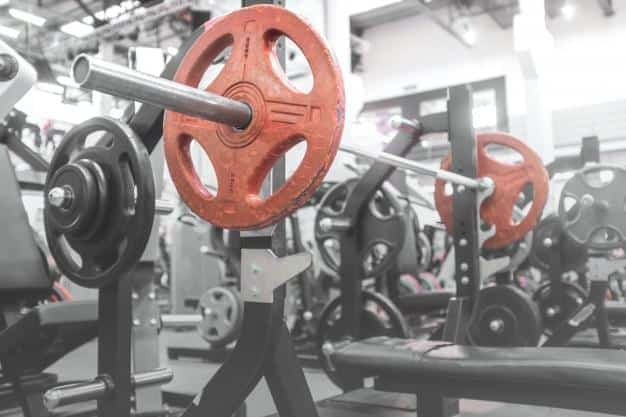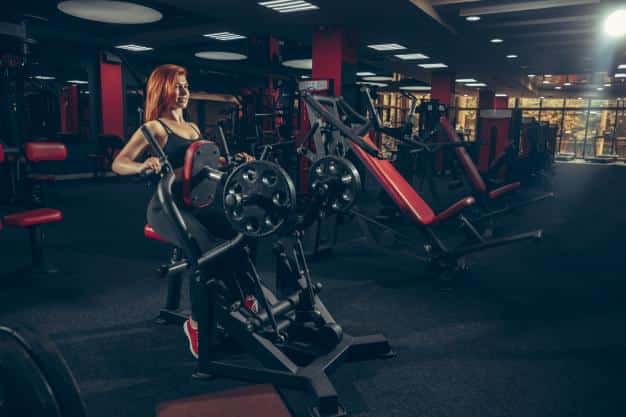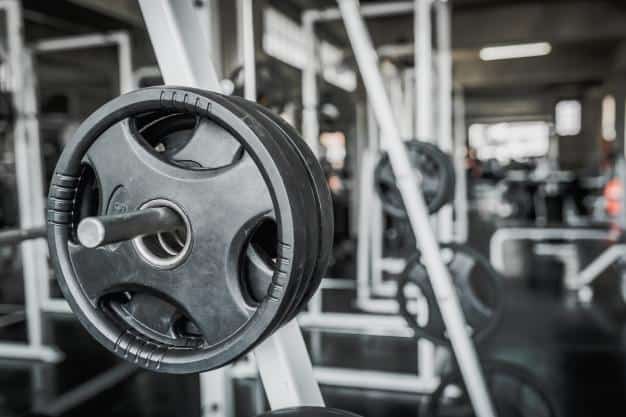The science of building muscle Part 2: Designing a resistance training programme
The Science of Building Muscle Part 2: Designing a Resistance Training Programme
Resistance Training Programme
(Click on the Reference Numbers in Blue for More Info)
Designing a resistance training programme to increase muscle mass can be a complex process that involves the careful manipulation of a number of acute programme variables and key training principles. These include loading and volume, exercise selection and order, rest periods, speed of contraction, frequency and overload.
This may seem a little daunting, but don’t worry, because in this article we are going to break the process down to help you to design a muscle building programme based on what the science tells us is the safest and most effective approach to take.
How Does Resistance Training Create Muscle Growth?

By gaining an understanding of how resistance training can stimulate muscle growth, we can begin to understand the nature of the most effective muscle building programmes.
It has been theorised that there are 3 primary factors responsible for initiating the increase in muscle mass resulting from participation in a resistance training programme.
These are:
-
Resistance Training Programme – Mechanical Tension
Mechanically induced tension produced both by force generation and stretch of a muscle is considered essential to muscle growth, as it disturbs the integrity of skeletal muscle. It is the combination of generating force and stretch that appears to have the greatest effect (1).
-
Resistance Training Programme – Muscle Damage
Resistance training can result in localised damage to muscle tissue which, under certain conditions, is believed to stimulate muscle growth. It is important to understand that the type of muscle damage referred to here is not that associated with an injury, such as a muscle pull or tear. Rather, it is characterised by the muscle soreness that occurs a day or two after a new or particularly demanding exercise session (1).
-
Resistance Training Programme – Metabolic Stress
The metabolic stress associated with resistance training manifests itself in the accumulation of substances known as metabolites. These are the by-products of the body’s production of energy to fuel the resistance exercise. They include lactate, hydrogen ion, inorganic phosphate, creatine, and others. Muscle building workouts typically involve a high volume of repetitions with a moderately heavy load which induces metabolic stress while maintaining significant tension within the muscles (1).
Once a muscle is sufficiently stimulated, growth results from an accumulation of proteins, through either increased rate of synthesis, decreased breakdown, or a combination of both (2).
Putting A Resistance Training Programme Together
Now that we understand how resistance training stimulates muscle growth, we can begin to put together an effective training programme. We do this by answering a number of questions and applying certain principles:
What Equipment Should We Use?

Free-weights (dumbbells and barbells), resistance machines, bodyweight exercises, resistance bands, suspension training equipment (TRX), and kettle-bells can all be used in a resistance training programme (3), providing that they offer the required level of resistance to stimulate muscle growth.
The type of equipment that you use in your training programme will depend on what is available to you, your preferences and level of experience. For example, a free-weight squat has long been regarded as an excellent mass building exercise for the legs but if you don’t have the requisite level of skill to perform it correctly, then it could be prohibitively dangerous. In which case, the leg press machine would be an easier to perform safer alternative.
It is recommended that for novice to intermediate training, both free-weight and machine exercises are included if the option is available (2).
Note: Always seek the advice of a suitably qualified exercise professional if you are in any doubt regarding the correct performance of an exercise.
What Exercises Should We Perform?

Like selecting the equipment that you are going to use in your programme, selecting the right exercises also requires you to consider a number of factors, such as your level of skill, physical limitations and injuries, and time availability. You must also consider muscle balance; if you perform a disproportionate amount of exercise for a particular muscle or group, e.g., the chest, this can lead to muscle imbalances, postural issues and an increased risk of injury (4).
Exercises can be divided into basic two groups:
- structural exercises (also known as compound, core, or multi-joint exercises) and
- body part exercises (also known as isolation or assistance exercises) (4).
Structural exercises recruit several muscles and joints to produce the movement, e.g., the bench press, squat, bent-over row and leg press. The advantages of structural exercises for building muscle are that they are time efficient, as you train a number of muscles simultaneously, and they are more effective at increasing strength (4) and the levels of the muscle building hormones testosterone and growth hormone than body part exercises (1) However, often these exercises involve complex movements, so it is essential that you are able to perform them correctly to ensure their effectiveness and to reduce the risk of injury.
Body part exercises usually only involve one joint and isolate a single muscle or group, e.g., bicep curls, pec flyes, and leg extensions. Their ability to isolate a particular muscle or group makes them valuable for bodybuilding, injury prevention and rehabilitation. Although they are less effective at developing strength than structural exercises, they pose a lesser risk of injury because of the reduced level of skill and technique involved (4).
The consensus of scientific opinion is that structural and body-part exercises are effective for increasing muscle mass, therefore, both should be incorporated into a muscle building programme for novice, intermediate, and advanced individuals (2).
How Many Exercises Should We Perform?

If are you going to perform a whole-body routine (i.e., train all of the muscles in a single session), you should select 8-10 exercises that train all of the major muscle groups (legs, chest, back, shoulders, etc) (2). The American College of Sports Medicine (ACSM) (3) suggest that a different exercise should be performed for each muscle group every 2-3 sessions to ensure even development and reduce the chances of overuse injury.
If you are using a split routine (i.e., training different muscles on different days of the week), you may perform more exercises per muscle group. Body builders using a split routine will typically perform 3 or more exercises per body part. (1). The theory and application of split routines will be discussed later in this series.
In What Order Should The Exercises Be Performed?
It is generally recommended that exercises involving a large amount of muscle mass (multi-joint) are performed first, followed by exercises involving a smaller amount of muscle (body part exercises).
It has been theorised that by exercising the larger muscle groups first, a superior training stimulus is presented to all of the muscles (4,5).
Performing body part exercises prior to structural exercise can negatively impact on the performance of the structural exercises. For example, it has been shown that when single joint exercises were performed prior to the squat and bench press, there is on average a 75% decline in bench press performance and a 22% decline in squat performance (4).
Additionally, if a relatively small muscle such as the triceps is fatigued prior to performing an exercise such as the bench press, there is an increased likelihood of the triceps failing during the bench press before the larger muscle mass of the pectorals has received sufficient stimulus (5).
There are also safety issues to consider when planning the sequence of the exercises in your programme. It is advisable to perform the large muscle group structural exercises, such as squats and bench press, in the early stages of the programme because they require most concentration and skill and are most affected by fatigue. If you try to perform these exercises when you are tired, you’re not only likely to make less gains, but also prone to using poor technique, increasing your risk of injury.
A method of exercise sequencing which is particularly helpful for those new to resistance training is to alternate between upper and lower body exercises. Another method that can reduce the rest time between sets but allows the muscle sufficient recovery is the ‘push-pull’ method. This involves alternating between pushing exercises (e.g., bench press) with pulling exercises (e.g., cable row). This sequence ensures that the same muscle group is not used for two successive sets, therefore allowing sufficient recovery (5).
Bodybuilders often reverse the exercise order by using a technique called pre-exhaustion. This involves performing a body part (isolation) exercise to fatigue a particular muscle or muscle group prior to the same muscle group being worked further using a structural exercise. We’ll look at this technique in detail later in this series.
Here’s an example of a typical whole-body programme. The exercises are sequenced so that the most demanding are performed in the early stages of the session. The programmes alternates between upper and lower body exercise for the first 4 exercises and also employs the ‘push-pull’ system.
- Squats
- Bench press
- Romanian dead-lift
- Lat pulldown
- Shoulder press
- Bicep curl
- Triceps extension
- Calve raise
- Abdominal curl
- Back extensions
How Often Should We Train?

The frequency of training depends on the number of muscle groups trained per workout. We should aim to train each muscle group 2-3 times per week on non-consecutive days to allow at least 48 hours recovery between sessions (3). Therefore, it is recommended that those new to resistance training perform a whole-body routine 2–3 days/week. As an individual becomes more experienced (6 months of consistent resistance training) they may begin to train 3-4 times per week using a split routine, with advanced participants (those with years of training experience) training 4-6 days per week (2). It is important to note that if you’ve trained particularly hard, you may require more than 48 hours recovery before you able to train the fatigued or sore muscles again.
How Many Repetitions Should We Perform?

The general consensus of scientific opinion states that a repetition range of 6-12 is optimal for building muscle (1,2,6,) although some authorities suggest 8-15 reps to be more effective (7).
The American College of Sports Medicine (ACSM) provides further guidance: For novice and intermediate individuals, it is recommended that moderate loading be used (70–85% of 1 RM*) for 8–12 repetitions per set. For advanced individuals, it is recommended that a loading range of 70–100% of 1 RM be used for 1–12 repetitions per set in a periodised manner so that the majority of training is devoted to 6–12 RM and less training devoted to 1–6 RM loading (2).
Some authorities suggest that body-part or assistance exercises, such as pec flyes or bicep curls, should be limited to loads no greater than an 8 RM. This is because heavier loads are better tolerated using structural exercises which spread the load across a number of joints thereby reducing the chance of injury (5).
Older individuals (those over 50 years) and those who are unfit, should perform one or more sets of 10-15 reps at a moderate intensity. They can progress up to the 6-12 rep range after a period of adaptation (3).
*The term ‘1 RM’ refer to 1 repetition maximum, the amount the maximum amount of weight that can be lifted for 1 repetition.
How Quickly Should We Perform Each Repetition?

Although there appears to be no universal consensus regarding the optimal speed a repetition should be performed to maximise muscle gains, the evidence suggests that faster movements pose less of a stimulus for increasing muscle than a slow to moderate tempo (2).
Therefore, a relatively slow to moderate speed is typically recommended for increasing muscle mass, with the concentric phase (when a muscle shortens) being slightly quicker (1–3 seconds) than the eccentric phase (when a muscle lengthens) (2-4 seconds) (1).
For example, when performing the bench press, you may take approximately 2-4 seconds to lower the bar, pause for a second, then take 1-3 seconds to raise the bar back to the start position. This speed of contraction can be very demanding and cause considerable muscle soreness if you’re not accustomed to it. So, it is advisable to progress to it gradually.
Should We Train To Failure?

Muscular failure can be defined as the point during a set at which a muscle/s can no longer produce sufficient force to complete the concentric phase of an exercise, e.g., moving the bar upwards during the bicep curl. Although the merits of training to failure are still a matter of debate within the scientific literature, it is commonly believed that it is necessary to maximise muscle growth (1).
However, there is evidence to suggest that it also increases the risk of overtraining and psychological burnout, and my even result in a reduction of testosterone and growth hormone. In light of this, it would seem prudent to include sets performed to failure in a muscle building programme, but its use should be limited to avoid an over-trained state, perhaps alternating periods of training to failure with those not performed to failure (1).
How Many Sets Should We Perform?
Although individuals new to resistance training can increase their muscle mass by performing just 1-3 sets, the general recommendation is that 3-6sets of each exercise should be performed to optimise muscle gains (2,4,6) (This does not include warm-up sets). As useful as these guidelines are, they don’t take into account how many exercises are being performed for a particular muscle group, which can vary considerably between a basic whole-body programme and a complex split routine.
To provide some clarity on this issue, Schoenfeld et al., (8) conducted a review of the scientific literature on the subject and found a ‘dose-response’ relationship between the number of sets performed and the speed at which muscle grows. The results showed that 5-9 sets per muscle group per week were more effective than 4 sets or less and 10 or more sets per muscle group per week were more effective than 5-9 sets. Consequently, body builders will typically perform 3-6 sets of 3 or more exercises per muscle group twice per week (4).
The Importance Of Volume
A term often associated with resistance training is ‘volume’. This is defined as the product of total repetitions, sets, and load performed in a training session (2). Higher-volume, multiple-set programmes have consistently proven superior over single set protocols for increasing muscle mass (1,2). It is not clear whether the greater effectiveness of higher-volume workloads is the product of greater total muscle tension, muscle damage, metabolic stress, or some combination of these factors.
However, numerous studies have demonstrated that higher volume training programmes elicit greater increases in the muscle building hormones testosterone and growth hormone (1).
When you consider how important high-volume training is for maximising gains in muscle mass, the need to employ split routines becomes clear.
How Long Should We Rest Between Sets?

The rest period between sets and exercises is a primary determinant of the overall intensity of a programme, as rest period length is strongly related to the amount of weight lifted and also affects metabolic and hormonal demands, as well as the performance of subsequent sets (4).
If a rest period is long, e.g., 3-5 minutes, it will allow the completion of the required number of set and reps but will not provide the metabolic stress needed to stimulate optimal muscle growth. On the other hand, if it is short, e.g., 30 seconds, it will provide sufficient metabolic stress but is not likely to provide sufficient recovery to allow completion of the volume of work needed to stimulate muscle growth. Therefore, moderate rest intervals of 1-2 minutes appear to provide a satisfactory compromise for maximising muscle growth (1,2, 4,6). However, you may need to take longer recovery periods (2- to 3-min) when performing heavy structural exercises, such as squats and deadlifts, to allow the desired number of sets and reps to be completed with correct form (2).
Overload

In order to achieve continued gains in muscle size we need to subject the muscles to greater stress than they are accustomed to, which is referred to as ‘overload’. This can be achieved a number of ways, including increasing the frequency of training, the number of sets, the number of exercises for a muscle group or by increasing the resistance (2). There also are a number of advanced training techniques that can be employed to create overload, which we will look at later in this series.
Increasing resistance is the most common method of overload and is essential if the required level of muscle tension to stimulate muscle growth is to be maintained as we get stronger. A conservative method is the 2-for-2 rule: If you can perform 2 or more repetitions over your repetition goal in the last set in 2 consecutive workouts, the resistance should be increased in the next training session. For example, if you were using a training repetition range of 6-12 and were able to perform 14 repetitions in the last set for two consecutive workouts, you could then increase the load for that exercise in the next session (4,7). As a guideline, an increase in resistance of 2–10% is generally appropriate (5,7).
Note: It is advisable to employ only one method of overload at a time. For example, you are unlikely to be able to lift more weight for more reps and sets.
Variation
Another principle we need to employ to ensure that the training stimulus remains optimal is ‘variation’. This refers to adjusting one or more programme variables over time. This can be as simple as regularly changing exercises in your programme to systematically varying exercise volume and intensity by employing a technique known as periodisation (2). We’ll look at this in more detail later in this series.
How Much Muscle I Can Expect To Gain And How Quickly?

How much muscle you gain and how quickly will depend on a number of factors including your age, gender, body type and size, genetics, muscle fibre type, training experience, training programme, diet and levels of muscle building hormones (testosterone and growth hormone) (9). Typically, individuals with high levels of testosterone and a greater percentage of fast twitch muscle fibres tend to make the greatest gains (9).
As a rule, if you’re new to resistance training you can begin to see an increase in muscle after 15 training sessions or 6–7 weeks of training (1), and expect to gain on average 3 lbs (1.36kg) of muscle after approximately 3 months of training (10).
A study involving young athletic men found that a one-year programme of heavy resistance training produced a 20% increase in body mass, most of which was muscle. Athletic women can expect to gain 50-75% of the absolute gains of men. It is important to note that the rate of muscle gain plateaus rapidly after the first year of training (9).
Example Programme
Presented below is an example of a basic whole-body muscle building programme employing both free-weights and resistance machines.
Exercise Sets Reps
Squats 3-6 x 6-12
Hamstring curl 3-6 x 6-12
Bench press 3-6 x 6-12
Lat pull-down 3-6 x 6-12
Dumbbell shoulder press 3-6 x 6-12
Bicep curl 3-6 x 6-12
Triceps pushdowns 3-6 x 6-12
Calf raise 3-6 x 6-12
Plus core exercises to suit
Resistance Training Programme – Summary
- Current research suggests that maximum gains in muscle mass are achieved by training programmes that produce significant metabolic stress while maintaining a moderate degree of muscle tension.
- When performing a whole-body routine, 8-10 exercises should be selected that train all of the major muscle groups. When employing a split routine, 3 or more exercises per muscle group may be used.
- It is generally recommended that exercises involving large muscle groups (multi-joint) are performed first, followed by exercises involving a small amount of muscle (body part exercises).
- 6–12 reps per set should be performed using multiple sets, at least some of which should be carried out to the point of concentric muscular failure.
- Rest intervals of 1-2 minutes should be taken between sets.
- Concentric repetitions should be performed at a speed of 1–3 seconds while eccentric repetitions should be performed at slightly slower speeds of 2–4 seconds.
- Each muscle group should be trained 2-3 times per week on non-consecutive days to allow at least 48 hours recovery between sessions.
- In order to achieve continued gains in muscle size some form of ‘overload’ must incorporated into the programme, such increasing the resistance.
In Part 3 of this series, we are going to look at the use of split routines.
